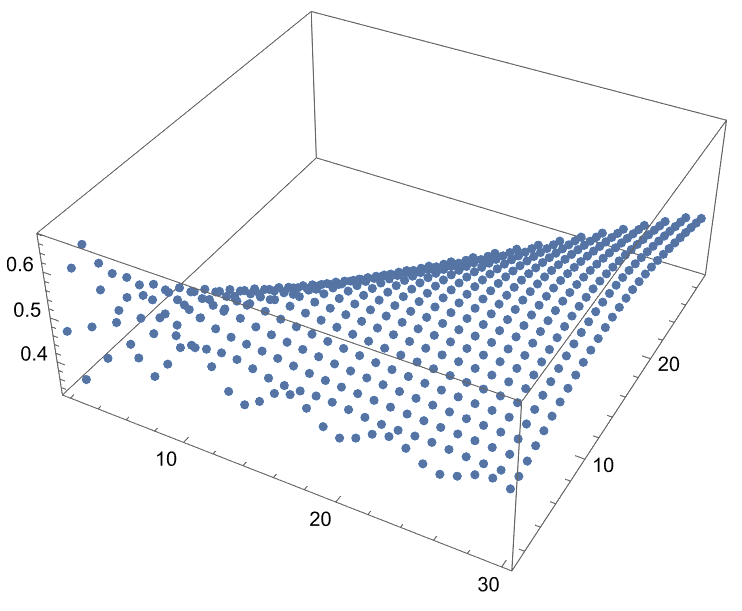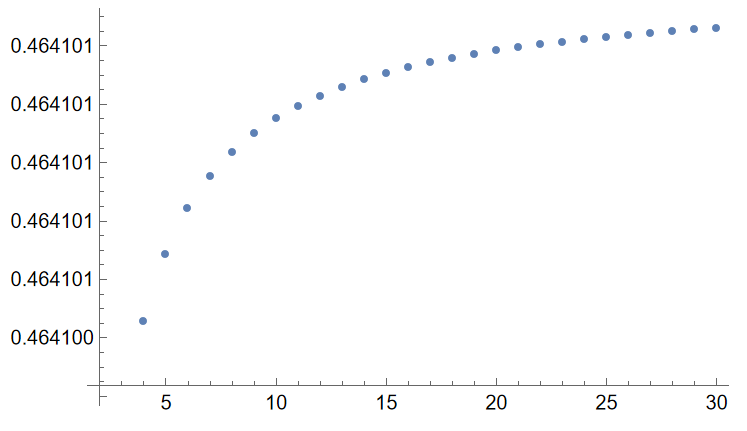I am interested in obtaining a good upper bound for the absolute value of the following integral $$ \left| \int_{0}^{\pi/3} e^{-itn} \left( 1-e^{it} \right)^{k} dt \right|, $$ when $n>k>0$ are positive integers.
I can obtain an upper bound, $(2\pi)/((3(k+2))$, as follows:
bringing the absolute value inside the integral,
evaluating $\left| 1-e^{it} \right|$ in the range of $t$ as $2-2\cos(t)$,
bounding $2-\cos(t)$ from above by $(3/\pi)t$,
evaluating the resulting integral.
However, when I calculate the integral directly for various values of $n$ and $k$, I find that the resulting upper bound is larger than the value of the absolute value of the integral itself.
So I am wondering if people have ideas for how to get an improved upper bound.
Once I move the absolute value inside the integral, I lose a lot in my upper bound (and any dependence on $n$), so some other approach is needed.
Do people here have any ideas, references,…?


